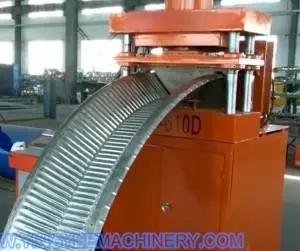
Understanding Welded Tube Mills An Essential Innovation in Metal Fabrication
Welded tube mills play a significant role in the manufacturing of steel tubes and pipes, which are critical components across various industries including construction, automotive, and energy. These specialized machines are designed to produce high-quality welded tubes through a continuous process, optimizing efficiency and reducing production costs.
The operation of a welded tube mill begins with raw material—typically in the form of flat steel sheets or coils. These sheets are unwound and fed into the mill, where they undergo a series of forming processes. The first stage involves cold forming, where the flat steel is progressively shaped into a tubular form. This is achieved through a series of rollers which guide and bend the steel sheets into a circular profile. Key to this process is the precision of the rollers, as any irregularities can lead to defects in the final product.
Once the steel is rolled into a tube shape, the edges of the metal sheets are aligned and prepared for welding. The welding process is crucial, as it joins the two edges to form a continuous tube. There are several welding techniques used in welded tube mills, with electric resistance welding (ERW) being one of the most common. ERW utilizes electrical currents to heat the edges of the metal, causing them to fuse together. This method is favored for its speed and efficiency, capable of producing tubes at high rates while maintaining strong weld integrity.

After the welding stage, the newly formed tubes undergo several post-welding processes. These can include cutting to desired lengths, straightening, and surface finishing to remove any welding scale or imperfections. It is essential to maintain strict quality control at this stage, as many applications require specific mechanical and aesthetic properties.
Welded tube mills have evolved significantly over the years, incorporating advanced technologies such as automation and computer control systems. These innovations not only increase production speeds but also enhance the precision and flexibility of the manufacturing process. Moreover, modern tube mills can produce a wide variety of tube dimensions, materials, and wall thicknesses to meet the diverse needs of the market.
The applications for welded tubes are vast. In the construction industry, they are used for structural support, frames, handrails, and scaffolding. In the automotive sector, welded tubes can be found in exhaust systems, chassis, and various engine components. The oil and gas industry relies on these tubes for transportation and structural applications, underlining their importance in critical infrastructure.
In summary, welded tube mills are a cornerstone of modern metal fabrication, merging efficiency with quality to meet the growing demands of multiple industries. As technology continues to advance, the capabilities of welded tube mills will expand, further enhancing their role in the manufacturing landscape. The future of this technology promises even greater efficiency, sustainability, and versatility, ensuring that welded tubes remain integral to our industry and way of life.